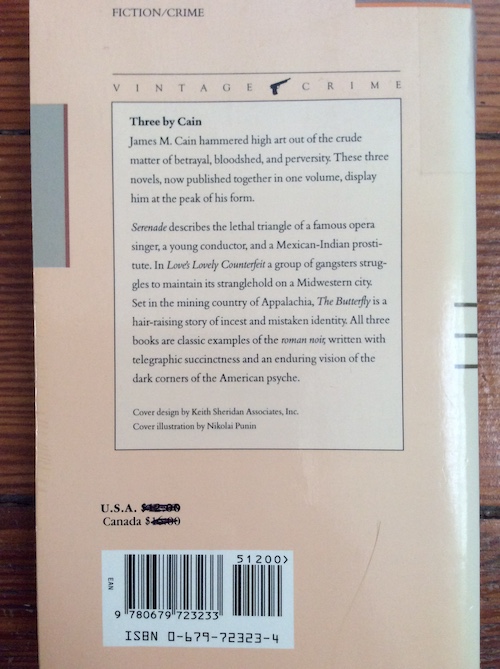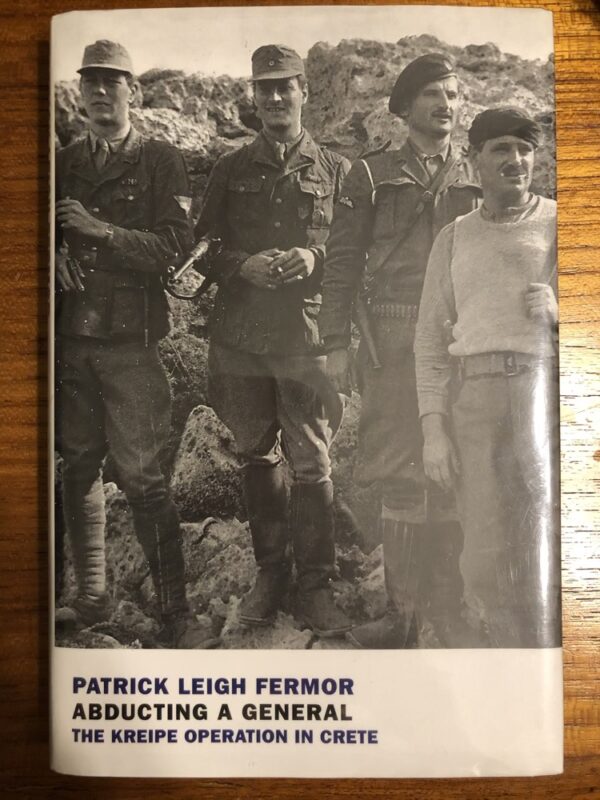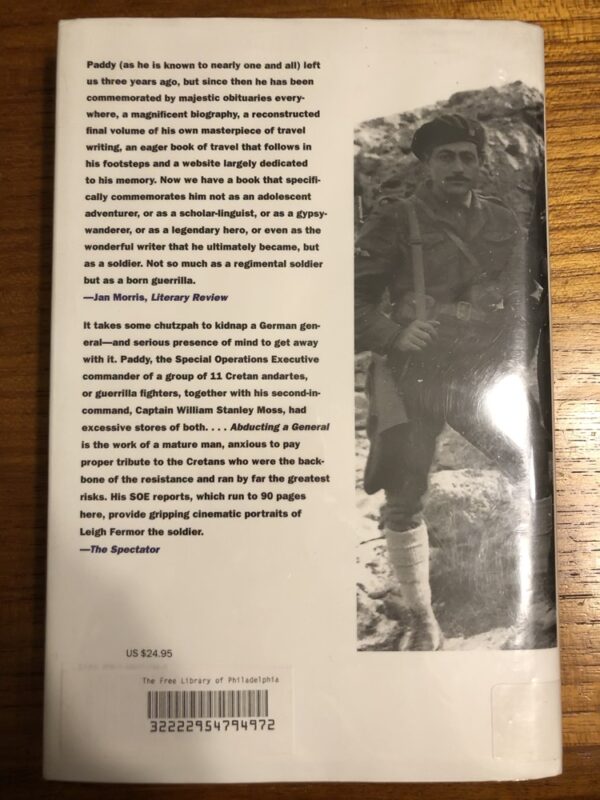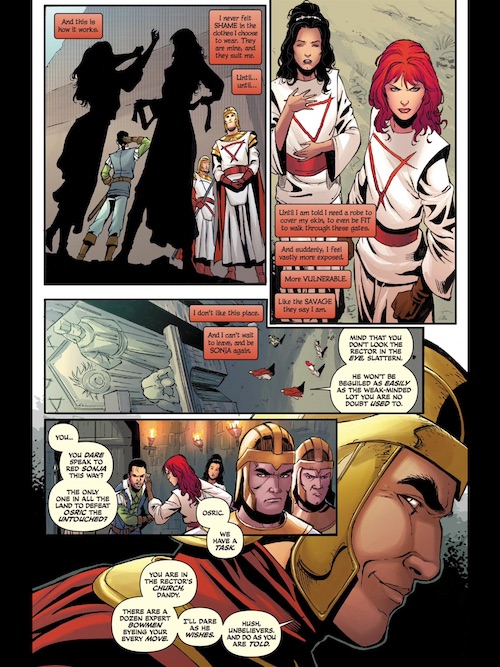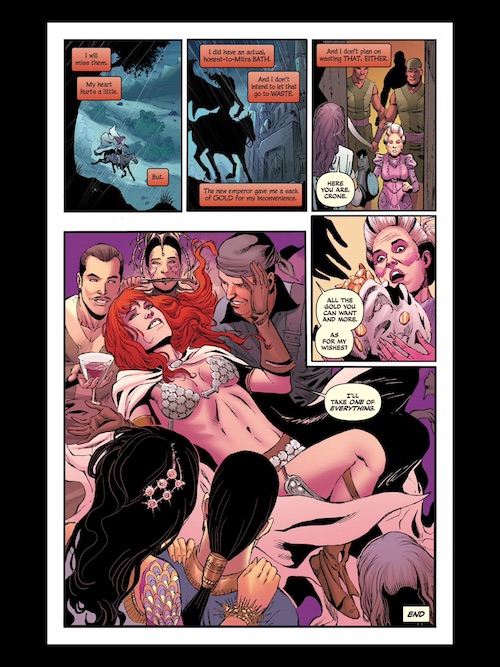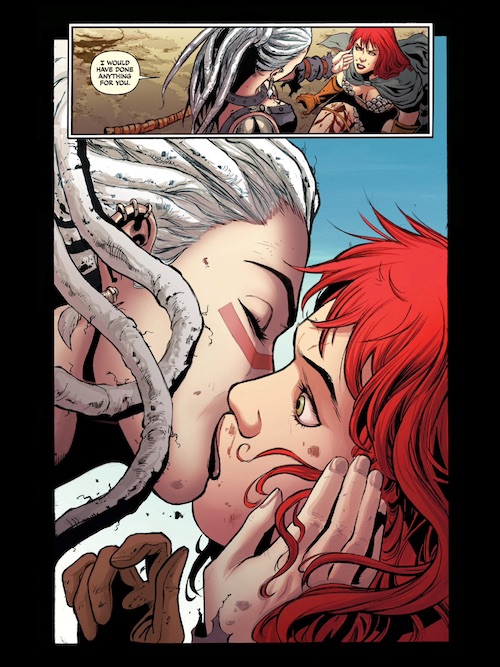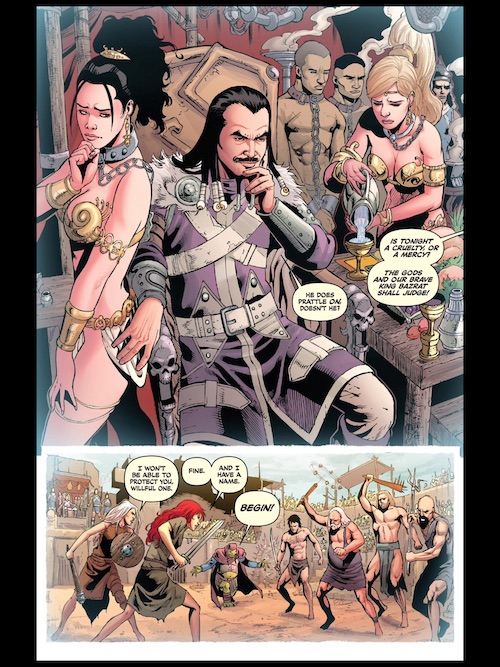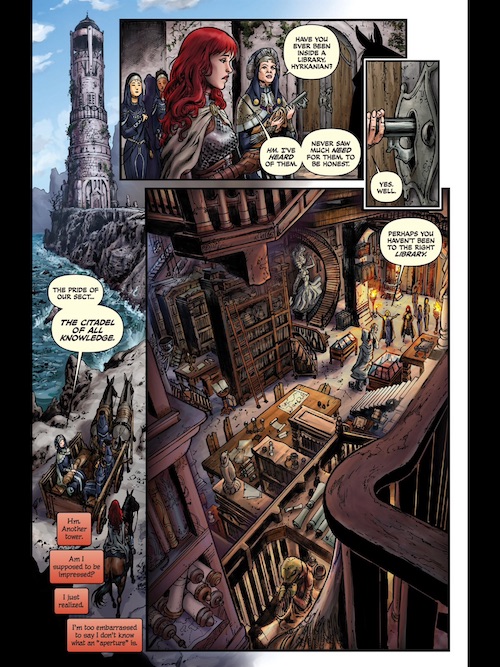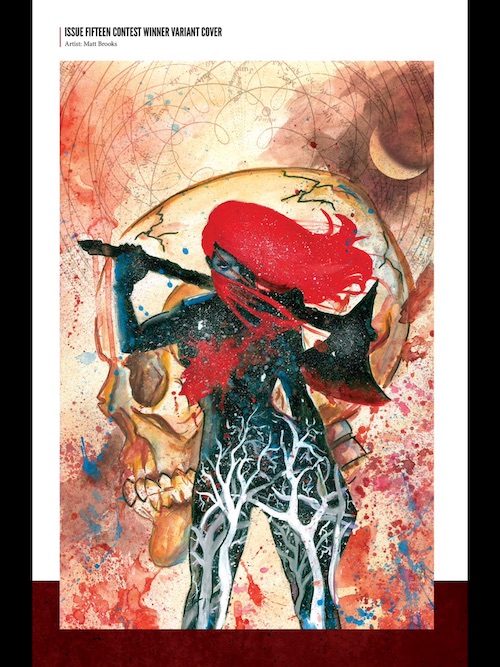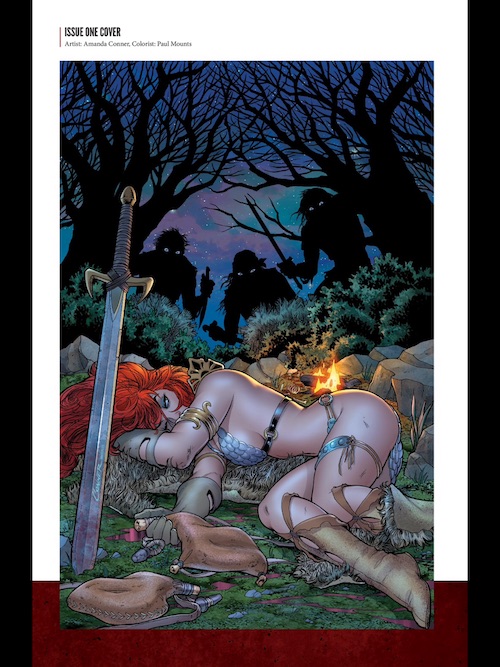During the month of June I finished reading the second book in the Chronicles of Narnia series, Prince Caspian; watched the contemporary remake of Sabrina (not the teenage witch); consumed James M. Cain’s bewildering novel Serenade; leafed carefully through the pages of The Gail Simone Red Sonja Omnibus; was drawn in by the first volumes of Gideon Falls; enjoyed Bogey in Sahara; and pondered the ideological significations of history and time in the sixth and seventh contributions to the Star Trek film series.
6/2
— C. S. Lewis, Prince Caspian, Ch. IV: Old Narnia ’tis no fable. For a while I have been reading out loud to Lucian, my son, late at night before he goes to bed. Doing this is a ritual in which I repeat select episodes of my own childhood. My father read these same books to my sister and I.

6/3
— Sabrina (1995): I thought, this is a good movie. Then I thought, it is a Sydney Pollack film. Then I thought, would it be good if it wasn’t a Sydney Pollack film? And now I think, there are two answers to that question.
Julie Ormand was enchanting. In fact, I even hazarded the thought that she eclipsed Audrey Hepburn’s performance. What passes for consensus on the internet gainsays this opinion, loudly. It makes me wonder if I need to revisit the 1954 Sabrina.

6/4
— Finished Friedrich Schiller’s theatrical work Don Carlos. Read the Introduction. This may sound strange, but I almost never read the introduction before reading the work. At a formative moment in my intellectual development I cleaved desperately to the notion that introductions, prefaces, etc., only derange our interpretive powers before they set to work. I now desperately repudiate this notion.
— NYRB on Louise Fitzhugh, author of Harriet the Spy (which I have never read!)
— Prince Caspian, Ch. V-VI: Caspian leaves the castle and enters Old Narnia
— Thomas Mann, “Blood of the Walsungs”: Repeated allusions to blood and race.
6/5
— Don Carlos, Act I, Scene 1: The pleasure of reading again. Carlos and the Marquis, and Domingo, dance a circle around long familiarity, political transformations, and the failure of recognition.
— Deaths of Despair and the Future of Capitalism, Chs. 2-3
— The Gallant Hours (1960), last hour: James Cagney plays Admiral William Halsey, who played an important role in the Pacific theater during the second World War. I believe this was completely ignored by the film, but part of Halsey’s absence during the battle of Midway was a result of severe psoriasis.
— Book of Shadows: Blair Witch 2 (2000), last 40 minutes: It is hard to explain to anyone who didn’t live through that little sliver of time, the summer of 1999, how or why the Blair Witch Project (1999) was so incredibly popular. One reason may be that it did not contain the actors and actresses who star in this film, which is so insipid—despite what its occasional defenders may say—that my writing all of two sentences is already an injustice. When you give it some thought, this may be at least a creative sequel. But why would you bother when you could be reading Schiller?
6/6
— Deaths of Despair, Chs. 4-5: Tendentious?
6/8-10
— Prince Caspian, Ch. VII-VIII
— A Most Wanted Man (2019): Philip Seymour Hoffman’s last film. For me, Hoffman’s death was a seriously tragic loss. He was undoubtedly the most talented actor of his generation.
6/12
— James M. Cain, Serenade, 50 pp.: Sort of flummoxed by this novel, genuinely. Expecting pulp and you get some of it in the first scene at the bar and then the walk “home” with Juana. But when they leave together for Acapulco it becomes really strange. It’s a road novel, for a while, with descriptions very much channelling Wages of Fear (1953) and then they break into a church to shelter and consummate … Apparently this last scene precipitated a court case between Cain vs. Universal Pictures.
6/13
— Prince Caspian, Ch. IX-XI
— Bad News Bears (1976): This film was released when I was three, so there is no way that I could have seen it in the theaters, but it seems so dreadfully familiar to me. Walter Matthau plays the coach of the Bears, accompanied by Tatum O’Neal and Jackie Earle Haley (the latter stood out to me because of his role in Watchman [2009]).
Walter Matthau [read out loud]. Check out Charley Varrick (1973) for Matthau as an action film star. To me this is laughable because when I grew up he was known primarily through his lates films, like Grumpy Old Men (1993). There’s something sad about this.
— Serenade, 50 pp.: Another twist—what seem like pages upon pages about musical history, interspersed amidst a potentially fatal manhunt. This is really a strange novel: my admiration grows.
6/14
— Prince Caspian, Ch. XIII: Hilarious chapter in which Miraz is psychologically fooled by his captains into assuming single person combat with High King Peter to conclude the war.
— Serenade, 20 pp.
6/16
— Finished Prince Caspian
— Ordinary People (1980): Timothy Hutton was very, very good. As was Mary Tyler Moore. No one would have thought of her for this film … except director Robert Redford. In 1980 this film won Oscars for Best Picture, Best Director, Best Adaptation, and Best Supporting Actor (Timothy Hutton).
6/17
— Serenade, 20 pp.
6/19
— Road to Perdition (2002): The graphic novel may be better. I do not think Jude Law’s character was in the GN. But I could be wrong.
— New Jim Crow, 25 pp.
— Finished Serenade
6/20
— New Jim Crow, 10 pp.
— Patrick Leigh Fermor, Abducting the General, 10 pp. All I can think as I read this is how would they not have known how purposeless this action would be, especially when the original target was no longer available.
6/21
— NYRB on Gaza, Emily Dickinson, and post-Jan. 6th politics
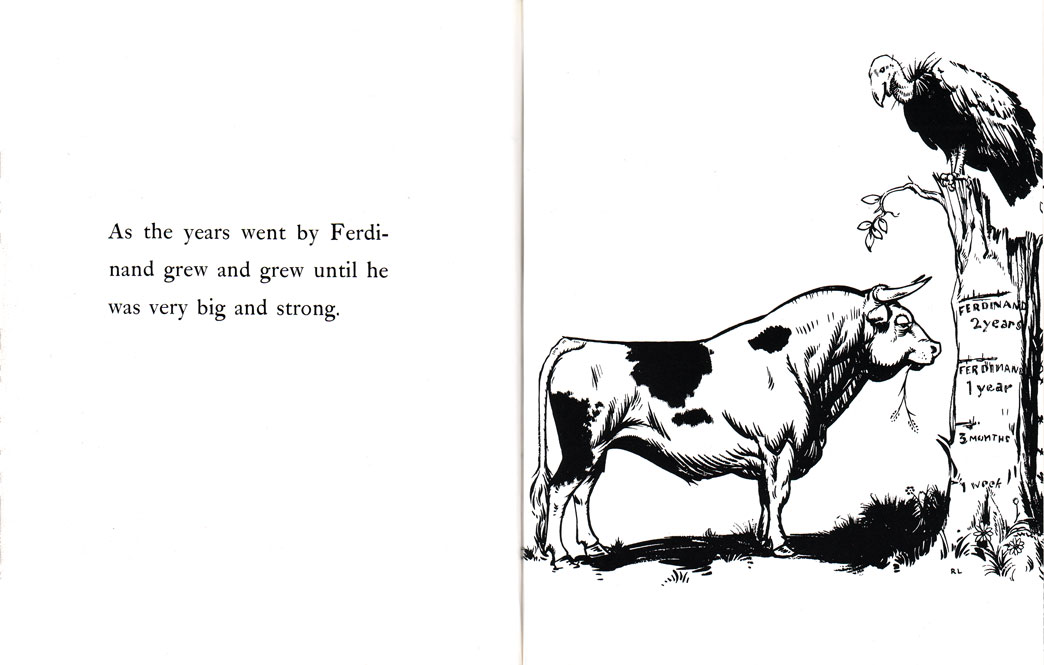
6/22
— The Pelican Brief (1993), all but the end: This film is sort of hilarious, at least at the scene where I stopped it, with Julia Roberts’ character on her bed in one room and the camera panning to Denzel Washington’s character laying on his bed in another room.
— Ferdinand (2017): If you have not read The Story of Ferdinand written by Munro Leaf and illustrated by Robert Lawson, I can genuinely say that you should. This book is one of those weird joys that you encounter when reading to your children, that reminds you about the joy of reading and the power of literature to conjure alternative worlds. The 2017 film is not bad, but it is not the book. And Lawson’s illustrations are part of what make the book so good (and the film so disappointing).
— The Complete Gail Simone Red Sonja Omnibus, 50 pp.: There’s something sordid and absurd about this. And interesting. The Gail Simone checked in the title is one of the persons responsible for rehabilitating, somewhat, the character of Red Sonja who was created in the 1970s for Marvel Comics.
6/23
— Rhapsody in Blue (1945), 1.5 hours. The story of George Gershwin’s amazing solipsism. It’s troubling when you realize that music you’ve known has a specific and clear origin …
— Red Sonja, 25 pp.
6/24
— Finished Red Sonja
— Galileo, Discourses and Mathematical Demonstrations Relating to Two New Sciences (1638), 20 pp. Intriguing set of questions about surface volumes, but not to be confused with the Dialogue Concerning the Two Chief World Systems (1632) … my mistake was only partially my own. The titles of electronic copies of public books are fudged to some great degree
6/25
— Lemire, Gideon Falls, Vol 1. The figure of the black barn, as usual, is more interesting before the narrative has to be resolved.
— Discourse, 5 pp.
— Croupier (1998): The excesses of the late 1990s are on plain display in this mildly interesting film. By excesses I mean horrible fashion choices, pretensions, etc.
— Abducting, Ch. 1
6/26
— Abducting, Ch. 2
— Benji (2017): Lucian was crying at the scene where Benji looked ready to meet his maker, replete with a sequence in which his dog life passes before his eyes. I was also crying … with laughter … inside. It’s hard to laugh when your son is really upset. Someday he’ll realize how funny it was. I hope.

6/28
— Sahara (1943). Directed by Zoltan Korda, starring Humphrey Bogart, Dan Duryea, Lloyd Bridges. Actually a pretty good film, to be honest.
Tells the story of an American tank crew in 1942—so early in the war and before the Americans really had a substantial presence in northern Africa—that’s shadowing the Brits and then retreating from the scene pictured below, when they come across an opportunity to slow down the enemy and give the Eighth Army time to prepare, regroup.

6/29
— Lemire, Gideon Falls, Vol.2
— Abducting, Ch. 3-4
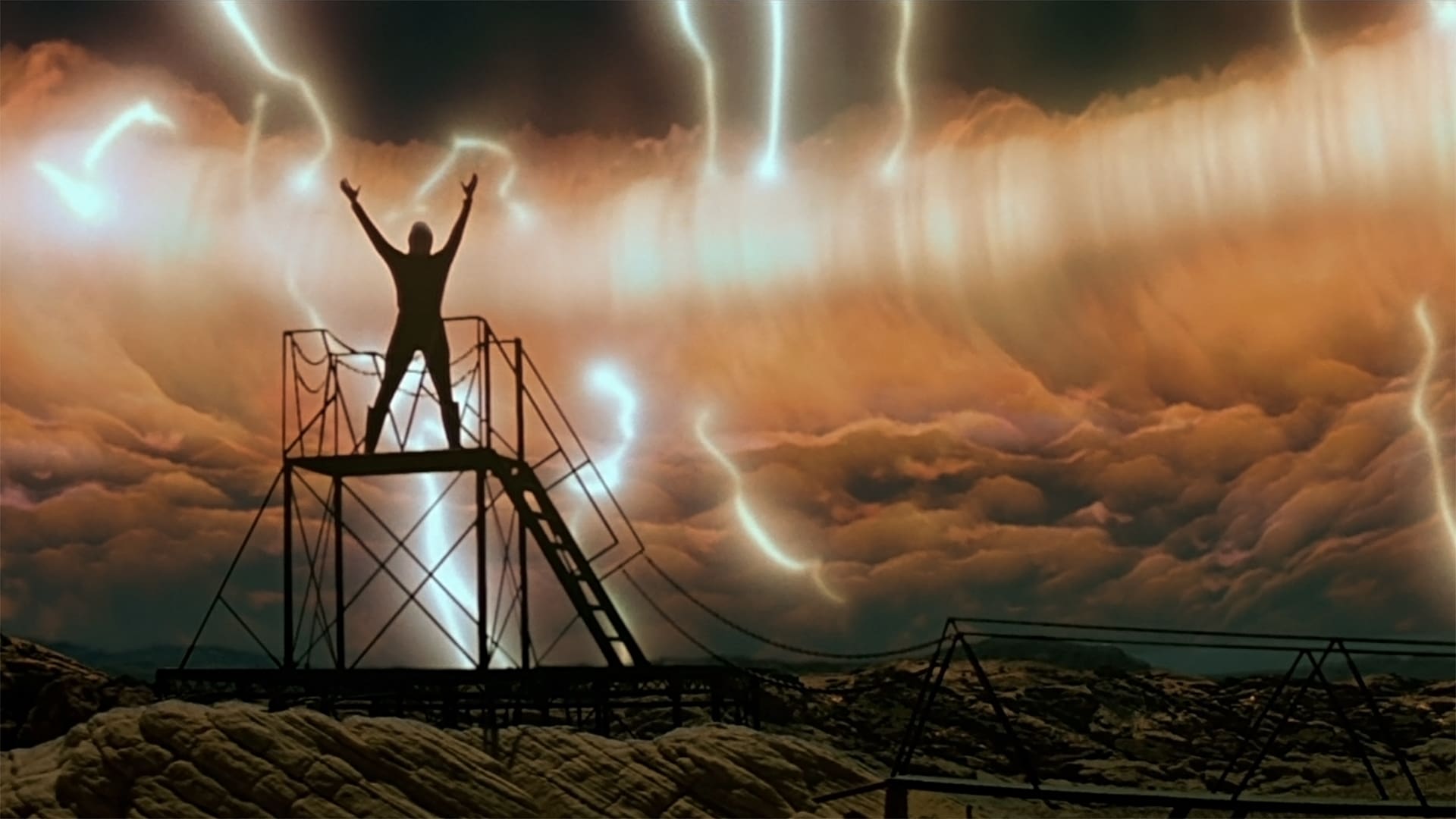
6/30
— Star Trek : Generations (1994), 90 minutes. Middle-class boredom is an ugly thing. But in the context of Star Trek VI, which in these “pages” I called a film to make the political unconscious weep, I have to admit that Generations is an interesting continuation. Remember that the latter was idly toying with Fukuyama‘s proclamation of the end of history, which idiot savant Captain Kirk claims is not over. Here, the villain (Malcolm MacDowell) seeks “the Nexus” where time ceases. Draw your own conclusions.



